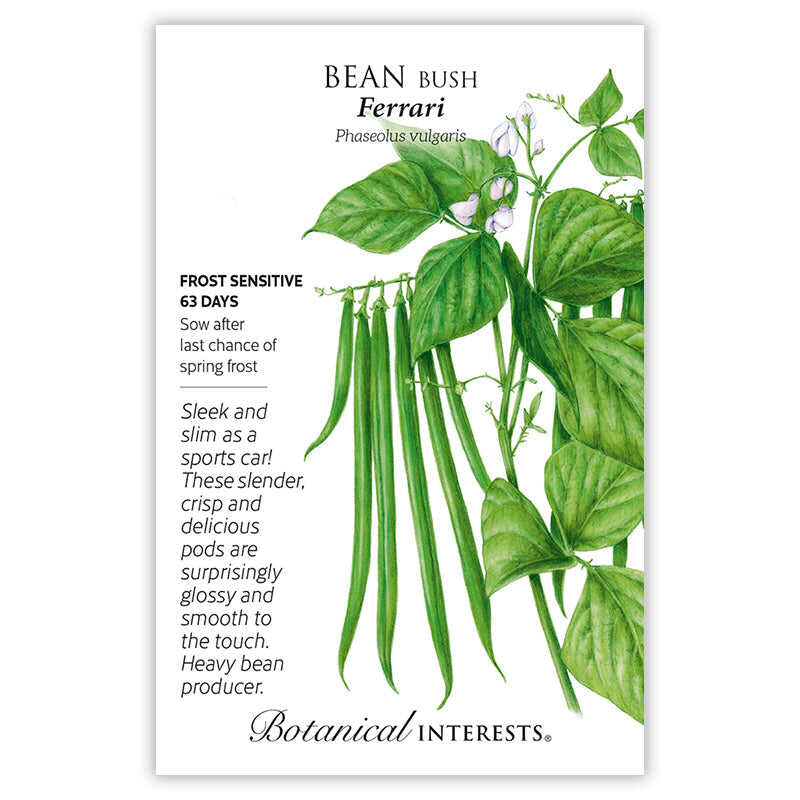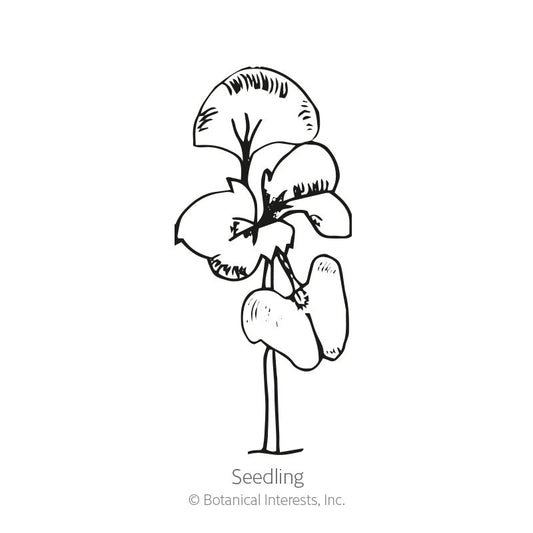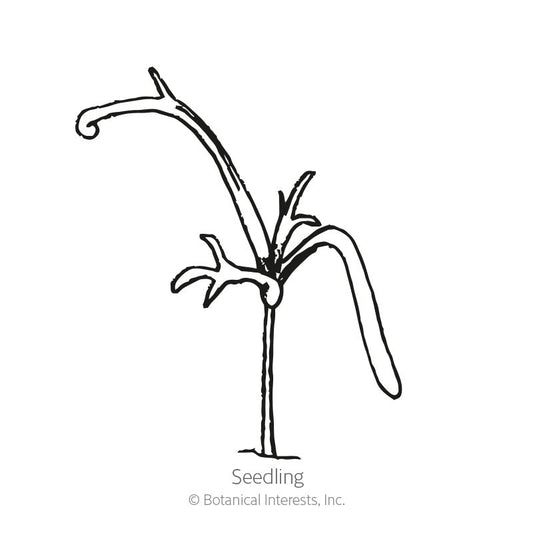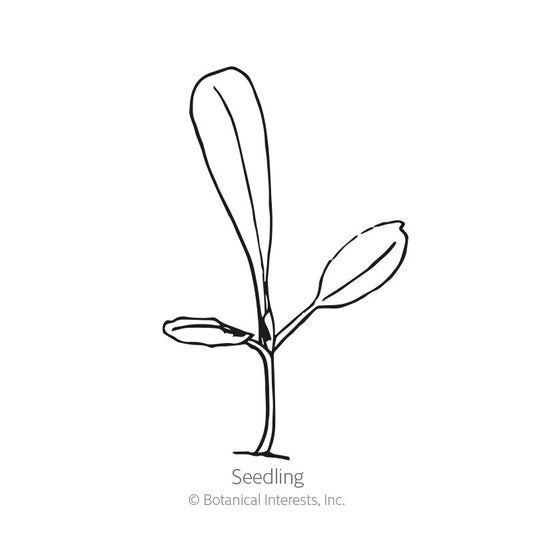


- Variety Info
- Sowing Info
- Growing Info
- Learn More
Variety Info
Days to Maturity: 63 days
Family: Fabaceae
Type: Snap Bean, Bush Bean (Learn More)
Native: Mexico and South America
Hardiness: Frost-sensitive annual
Exposure: Full sun
Plant Dimensions: 14"–16" tall, wide
Variety Info: Dark green, glossy, 5" slender pods. Plants are resistant to bean common mosaic virus and athrancnose.
Attributes: Bean Mosaic Virus Resistant, Anthracnose Resistant, Frost Sensitive, Good for Containers

Sowing Info
When to Sow Outside: RECOMMENDED. 1 to 2 weeks after your average last frost date, and when soil temperature is at least 65°F, ideally 70°–85°F. Successive Sowings: Every 7 to 14 days up to 80 days before your average first fall frost date. NOTE: In very hot summer areas, skip sowing as high heat approaches; temperatures consistently above 90°F will prevent beans from forming.
When to Start Inside: Not recommended; bean seedlings are sensitive to root disturbance.
Days to Emerge: 6–12 days
Seed Depth: 1"
Seed Spacing: 1 seed every 4"
Row Spacing: 24"
Thinning: Not required
Your hardiness zone is
Growing Info
Harvesting: Snap beans are ready to pick when the pod "snaps" or breaks in half cleanly. This is when the seeds have just begun to form and the pods are several inches long (depending on the variety). Hold the stem with one hand, and the pod with the other hand to avoid pulling off branches, which will continue to produce. At season's end, plants are great compost material if they are disease-free.
Learn More
Because bush beans were developed from pole beans (for condensed and easier harvests), sometimes they can revert to some of the traits of their predecessors by stretching and getting a little lanky before settling into more of a compact bush habit. Thus, why your bush bean appears to be a pole bean.
Bean: Sow and Grow GuideEdibles for Partial Shade










